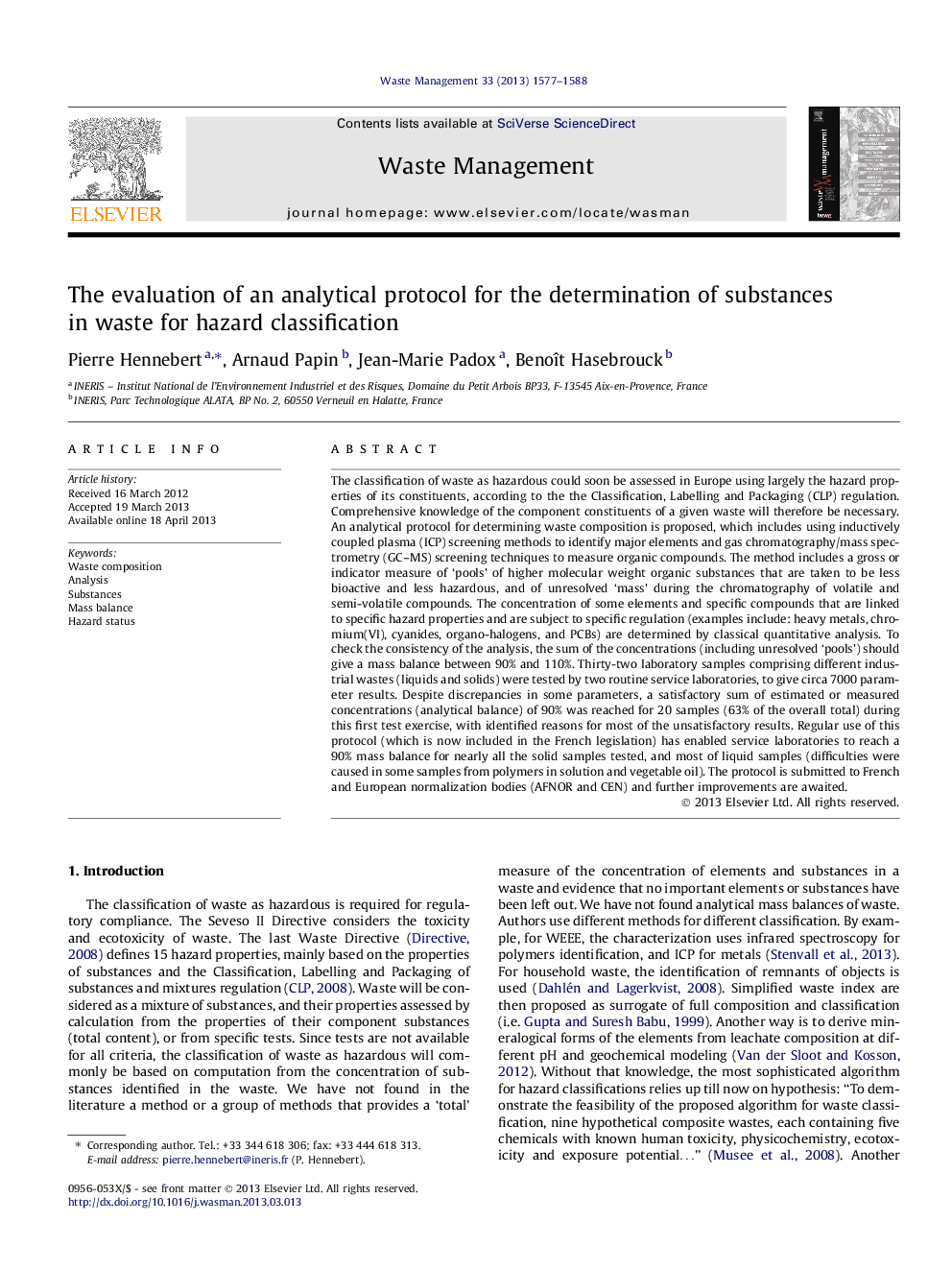| Article ID | Journal | Published Year | Pages | File Type |
|---|---|---|---|---|
| 4471954 | Waste Management | 2013 | 12 Pages |
•Knowledge of wastes in substances will be necessary to assess HP1–HP15 hazard properties.•A new analytical protocol is proposed for this and tested by two service laboratories on 32 samples.•Sixty-three percentage of the samples have a satisfactory analytical balance between 90% and 110%.•Eighty-four percentage of the samples were classified identically (Seveso Directive) for their hazardousness by the two laboratories.•The method, in progress, is being normalized in France and is be proposed to CEN.
The classification of waste as hazardous could soon be assessed in Europe using largely the hazard properties of its constituents, according to the the Classification, Labelling and Packaging (CLP) regulation. Comprehensive knowledge of the component constituents of a given waste will therefore be necessary. An analytical protocol for determining waste composition is proposed, which includes using inductively coupled plasma (ICP) screening methods to identify major elements and gas chromatography/mass spectrometry (GC–MS) screening techniques to measure organic compounds. The method includes a gross or indicator measure of ‘pools’ of higher molecular weight organic substances that are taken to be less bioactive and less hazardous, and of unresolved ‘mass’ during the chromatography of volatile and semi-volatile compounds. The concentration of some elements and specific compounds that are linked to specific hazard properties and are subject to specific regulation (examples include: heavy metals, chromium(VI), cyanides, organo-halogens, and PCBs) are determined by classical quantitative analysis. To check the consistency of the analysis, the sum of the concentrations (including unresolved ‘pools’) should give a mass balance between 90% and 110%. Thirty-two laboratory samples comprising different industrial wastes (liquids and solids) were tested by two routine service laboratories, to give circa 7000 parameter results. Despite discrepancies in some parameters, a satisfactory sum of estimated or measured concentrations (analytical balance) of 90% was reached for 20 samples (63% of the overall total) during this first test exercise, with identified reasons for most of the unsatisfactory results. Regular use of this protocol (which is now included in the French legislation) has enabled service laboratories to reach a 90% mass balance for nearly all the solid samples tested, and most of liquid samples (difficulties were caused in some samples from polymers in solution and vegetable oil). The protocol is submitted to French and European normalization bodies (AFNOR and CEN) and further improvements are awaited.
